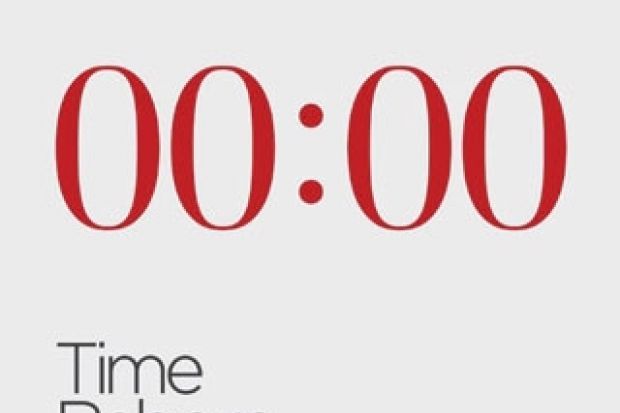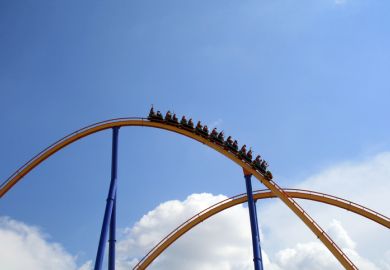In fundamental physics, progress has come from unification: connecting concepts that were previously considered separate. Albert Einstein’s revolutionary unification was to discover the intimate connection between time and space, overturning Isaac Newton’s view that “Absolute, true, and mathematical time, of itself, and from its own nature, flows equably without relation to anything external”.
Lee Smolin is a counter-revolutionary. In a wide-ranging argument, he aims to reinstate absolute time as a fundamental and real aspect of nature. He emphasises deep discordances in current thinking. Our compelling subjective experience is of time flowing one way, and our observations indicate a universe increasing in complexity from a concentrated initial state. But current physical theory is timeless – the laws of Newtonian and quantum physics are the same everywhen as well as everywhere – and they look the same backwards as forwards. History enters almost casually, after specifying the initial conditions on which the laws act to generate the subsequent evolution of the system being studied.
At least part of this discordance arises, Smolin thinks, from “physics in a box” – his expression for the way science has progressed by considering parts of the world, separate from their surroundings. While fully recognising the fruits of this divide-and-rule approach to physics, he thinks it must fail when applied to the universe as a whole.
One reason is that in our most fundamental theory, namely quantum mechanics, the state of a system describes possible observations probabilistically, presupposing many identical copies (individual atoms, for example) in order to compare the predictions of theory with the statistics of observations. But this procedure cannot be applied to the entire universe: by definition, there is only one.
I see the force of this argument but interpret it differently: as a good reason not to try to apply quantum physics to the whole universe. Although there are serious attempts to study “the wave function of the universe”, which might seem to imply describing the world in all its Byzantine complexity, these researches focus on simplified aspects, such as the evolution of the radius of the universe in finite-universe cosmologies. This looks like boxes again: choosing what to study and ignoring the rest – with the difference that what is ignored is now inside. Moreover, the old quantum paradigm of the isolated system has been superseded by more flexible formulations, in which the “boxes” are allowed to leak: the influence of the surroundings is incorporated in several ways.
Smolin also applies his “box” argument to Newtonian physics, in which the world is caricatured as a collection of interacting constituents moving under their mutual forces. A sufficiently powerful computer, programmed with the present state of all the constituents, could predict the entire future of the universe (and retrodict its past), implying a completely determined world. Smolin thinks this excludes the freedom of an open future – a scenario that he doesn’t like. Nor do I, but we need not fear it because the underlying argument is fallacious. Newtonian dynamics is so sensitive that even predicting in detail the “physics in a box” of a collection of chaotically colliding molecules depends on knowing the gravitational forces from all the particles in the universe outside the box. But these other particles include the parts of our imaginary computer, giving rise to the paradox of it having to compute itself. In this sense (that is, for unstable systems, unlike the Moon, for example), Newtonian dynamics is not predictive.
He is no relativity denier. As he explains, relativity can be re-expressed so as to be compatible with an absolute time. But since this is observationally equivalent to the usual formulation, there seems no reason to claim fundamental status for the absolute-time version.
I recommend Smolin’s book, not only for its main thesis but also for its exposition of some of the wilder speculations in contemporary physics (for example, a repeated-bounce cosmology, for which there are hints of evidence, albeit controversial). The case he makes is both deep and troubling, and he presents it with clarity and grace. It deserves to be taken seriously. But I remain unpersuaded by his arguments for reintrodu-cing absolute time. Concerning boxes, I agree with Newton, whose scientific reach and grasp, although both enormous, were not infinite: “To explain all nature is too difficult a task for any one man or even for any one age. Tis better to do a little with certainty & leave the rest for others that come after than to explain all things by conjecture without making sure of any thing.”
Time Reborn: From the Crisis of Physics to the Future of the Universe
By Lee Smolin
Allen Lane, 352pp, £20.00 and £11.99
ISBN 9781846142994 and 9780141939438 (e-book)
Published 21 May 2013
Register to continue
Why register?
- Registration is free and only takes a moment
- Once registered, you can read 3 articles a month
- Sign up for our newsletter
Subscribe
Or subscribe for unlimited access to:
- Unlimited access to news, views, insights & reviews
- Digital editions
- Digital access to THE’s university and college rankings analysis
Already registered or a current subscriber? Login




